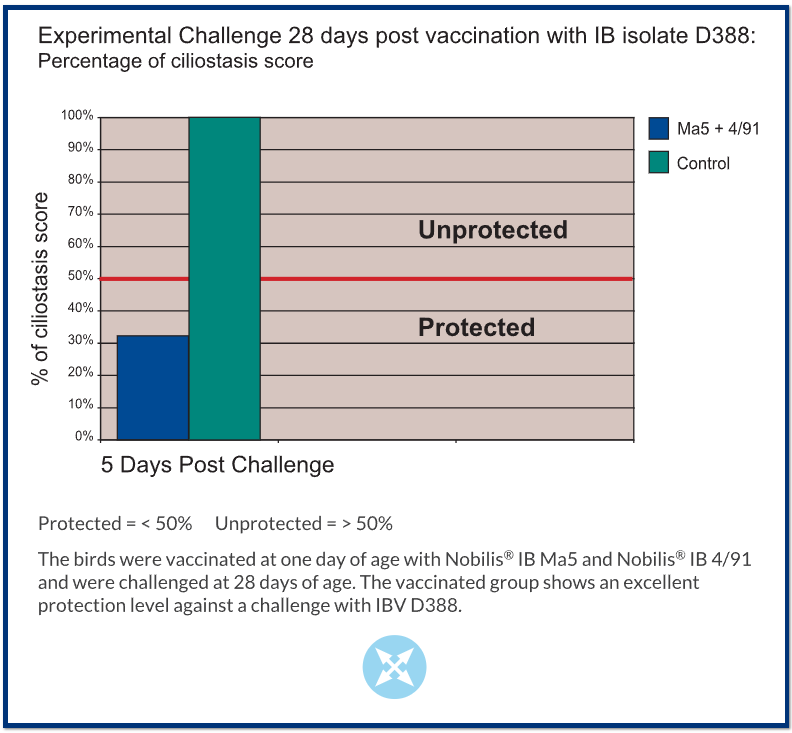Infectious bronchitis virus variant D388 (QX)
Introduction
In 2004, severe egg production problems were reported in The Netherlands. Also respiratory signs have been reported in broilers older than 4 weeks of age. In birds in production the problems are characterized by a low production rate with peak levels reaching only between 30% to 55% in apparently healthy flocks. These initial cases were associated to earlier outbreaks of nephropathogenic infectious bronchitis that had occurred in 2003 in broilers and pullets from which an unidentified variant IB virus was isolated. This original isolate was similar to a Chinese isolate known as QX. The Dutch isolate was later named D388 by the Animal Health Service at Deventer in the Netherlands. This virus continues to cause major economic problems in several European countries and also in other parts of the world, suggesting that in many areas, it is probably currently the IB variant of most concern for breeder/ layer flocks. Work carried out in Italy (Terregino et al., (2008). Avian Pathology, 37, 487–493) has suggested that a vaccination programme incorporating the Ma5 and IB vaccines provides good protection against challenge by this variant. Read more about vaccination programmes.
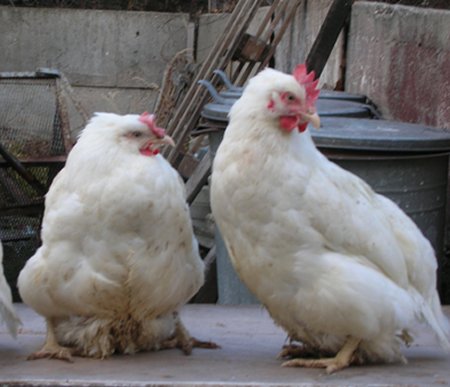
Post mortem examinations of affected chickens
Necropsy of birds infected with the QX virus frequently show either cystic oviducts with watery contents that could exceed one litre or (partially) atrophic oviducts with large cystic dilatations. The walls of the oviduct are thin and transparent in the cystic areas. The ovaries in the birds are functional and look normal.
Click on the following thumbnails to see photographs of the above lesions:

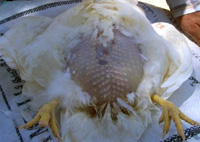
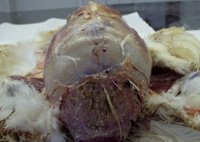
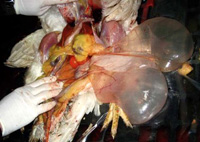
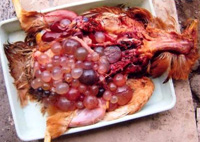
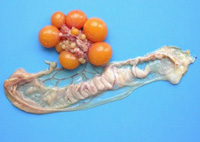
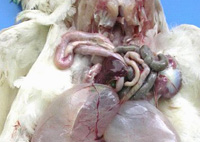
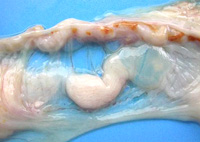
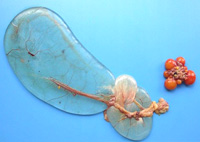
Protection
Initial experiments carried out at the Animal Health Service in Deventer showed that a single application of a live vaccine of the Massachusetts serotype does not confer sufficient protection against challenge with the D388 isolate. Better protection is achieved when vaccines of other serotypes are included in the vaccination program. For example, giving an initial vaccination at 1 day of age with a live Massachusetts type of vaccine (for example Nobilis® IB Ma5) followed by revaccination at 14 days of age with a live vaccine of the 4/91 type. This reinforces the importance of the concept of protectotypes (for more information see Serotypes and protectotypes).

References
Beato MS, De Battisti C, Terregino C, Drago A, Capua I, Ortali G. (2005).
Evidence of circulation of a Chinese strain of infectious bronchitis virus (QXIBV) in Italy.
Veterinary Record, 2005, 156:720.
Davelaar FG, Kouwenhoven B, and Burger AG (1984)
Ocurrence and significance of infectious bronchitis virus strains in egg and broiler production in the Netherlands. Veterinary Quarterly (1984), 6, 114‐120
Dolz, R., Pujols, J., Ordóñez, G., Porta, R. & Majó N. (2007). Molecular epidemiology and evolution of avian infectious bronchitis virus in Spain over a fourteen‐year period. Virology, 12, 20.
Landman, WJM, Dwars RM, and de Witt JJ (2005). High incidence of false layers in (re)production hens supposedly attributed to a juvenile infectious bronchitis virus infection
Proceedings of the fifty-fourth Western Poultry Disease Conference,
Vacncouver, Canada, 25‐27 April, 2005
Worthington, K. J., Currie, R. J. W. & Jones, R.C. (2008). An RT‐PCR survey of infectious bronchitis virus genotypes in Western Europe from 2002 to 2006. Avian Pathology, 37

